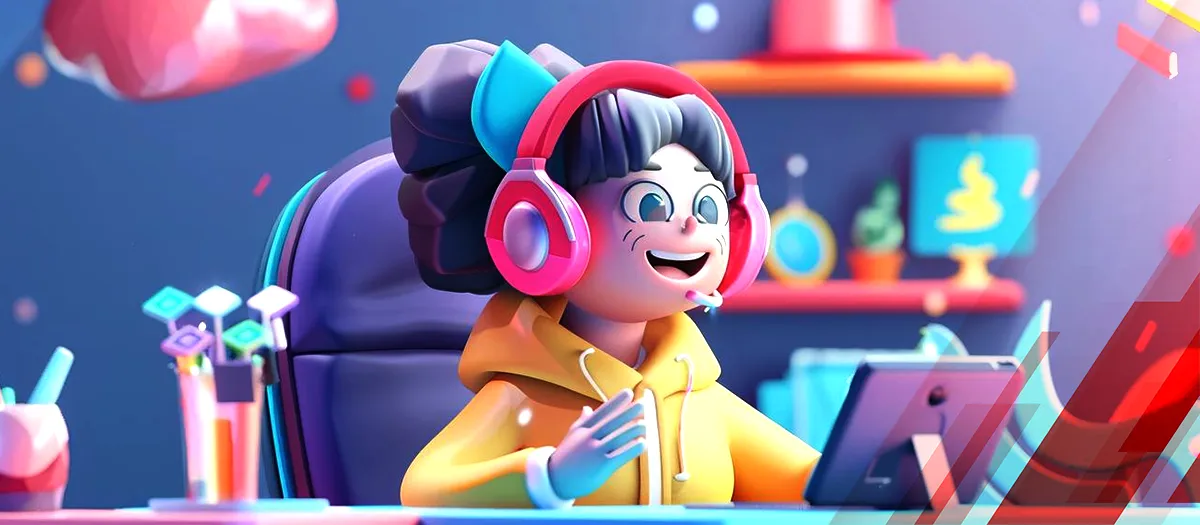The 3D animation market is evolving at a rapid pace, driven by technological advancements and shifting industry demands. From real-time rendering to AI-powered animation, new trends are reshaping how animated content is created and consumed. Hyper-realistic characters, virtual experiences, and sustainable animation are creating new opportunities for creators and businesses.
Kings Research estimates that the global 3D animation market was worth $23.54 billion in 2023 and is expected to grow to $59.26 billion by 2031. This blog dives into the top 10 emerging trends that are defining the future of 3D animation market
Following are the top 10 trends influencing the 3D animation market:
1. Real-Time Rendering & Game Engine Integration:
Real-time rendering is transforming the c, allowing creators to see changes instantly without long processing times. Game engines like Unreal Engine and Unity are widely used in animation, film production, and virtual experiences. These tools help studios create high-quality visuals faster and reduce costs. The demand for interactive content in gaming, virtual production, and simulations is driving this trend forward
In Novemver 2024, Epic Games released its latest game engine Unreal Engine 5.5, with key advancements in its Nanite and Lumen technologies, which dramatically improve the rendering of complex 3D scenes and enable real-time animation of highly detailed environments.
2. AI-Powered Automation & Machine Learning
AI-powered automation is streamlining animation workflows by handling complex tasks like motion capture, character rigging, and facial animation. Machine learning algorithms analyze vast datasets to create realistic movements and expressions with minimal manual effort. This technology reduces production time and costs while improving animation quality. Studios are increasingly adopting AI tools to enhance creativity and efficiency in filmmaking, gaming, and virtual experiences.
In October 2024, Wonder Dynamics launched Wonder Animation, an AI-powered 3D animation technology. This new tool transforms video footage into fully animated 3D scenes, accelerating animated film production while giving artists creative control. This innovation reflects the growing role of AI in the 3D animation market, driving efficiency and expanding creative possibilities for studios.
3. Virtual Production & Digital Cinematography
Virtual production is revolutionizing filmmaking by combining real-time 3D animation with live-action shooting. High-resolution LED walls display digital environments, allowing filmmakers to capture realistic scenes without extensive post-production. Digital cinematography benefits from advanced motion tracking and real-time lighting adjustments, creating high-quality visuals efficiently. This approach is widely used in films, TV series, and commercials to enhance creativity while reducing costs and production time.
4. Cloud-Based Collaboration & Rendering
Cloud-based collaboration is improving efficiency in the 3D animation by allowing teams to work remotely on shared projects. Studios can access powerful cloud rendering services without investing in expensive hardware, speeding up production while reducing costs. Real-time updates and seamless integration enable animators, designers, and developers to work together from different locations. This trend is driving scalability, flexibility, and faster turnaround times in animation and visual effects.
5. Immersive AR/VR Integration
Augmented reality (AR) and virtual reality (VR) are pushing the boundaries of 3D animation by creating immersive and interactive experiences. Animators use advanced 3D modeling techniques to build realistic environments for gaming, training simulations, and virtual storytelling. The demand for high-quality AR/VR content is growing in industries such as entertainment, education, and healthcare. This trend is driving innovation in animation tools and techniques to enhance user engagement.
6. The Rise of the Metaverse & NFT
The metaverse is driving demand for 3D animation as companies develop virtual worlds for social interaction, gaming, and commerce. Digital assets like avatars, environments, and interactive objects require high-quality animation to create realistic experiences. NFTs (non-fungible tokens) are enabling animators to monetize digital artwork and protect intellectual property. This trend is expanding opportunities for creators while reshaping how digital content is owned, traded, and experienced.
In July 2024, Walmart launched Walmart Realm, an immersive shopping platform that lets consumers explore virtual environments curated by online creators and purchase products within the metaverse. The creation of such platforms requires significant investment in 3D modeling, animation, and virtual world design, contributing to the expansion of the 3D animation market
7. Photorealism & Advanced Rendering Technologies
Photorealism is becoming a key focus in 3D animation, driven by advancements in rendering technologies. Ray tracing, global illumination, and AI-powered upscaling enhance lighting, shadows, and textures to create lifelike visuals. Industries such as film, gaming, and advertising are using these technologies to deliver hyper-realistic animations. The demand for high-quality visuals is pushing studios to adopt advanced rendering tools that improve realism while optimizing production efficiency.
8. Innovations in Motion & Performance Capture
Motion and performance capture technologies are evolving to create more realistic character animations. Advanced sensors, AI-driven tracking, and real-time data processing enable animators to capture subtle facial expressions and body movements with high accuracy. These innovations are widely used in films, gaming, and virtual reality to enhance storytelling and character realism. The growing demand for lifelike digital humans is driving continuous improvements in motion capture systems.
9. Interactive & Gamified Content
Interactive and gamified content is reshaping the 3D animation market by making experiences more engaging and immersive. Animators are integrating real-time interactions into storytelling, marketing, and education to enhance user participation. Gaming mechanics, such as rewards and adaptive narratives, are being used in animated content across industries. This trend is driving demand for dynamic animations that respond to user input, creating personalized and interactive experiences
10. Sustainability & Energy-Efficient Production Practices
Sustainability is becoming a priority in the 3D animation industry as studios adopt energy-efficient production practices. Optimized rendering processes, cloud computing, and AI-driven workflows help reduce power consumption and environmental impact. Companies are also focusing on minimizing hardware waste by using virtual workstations and cloud-based collaboration. The push for greener solutions is driving innovation in animation technology while promoting responsible production methods.
Conclusion:
The 3D animation market is evolving swiftly with advancements like real-time rendering and AI automation. These technologies are fuelling the rise of immersive experiences in augmented reality (AR), virtual reality (VR), and the metaverse. Virtual production is revolutionizing filmmaking, while motion capture and photorealistic rendering are pushing the boundaries of realism. Furthermore, interactive content and blockchain innovations are creating exciting new opportunities for creators. As technology continues to advance, 3D animation will undoubtedly push creative and technical boundaries across a wide range of industries.




